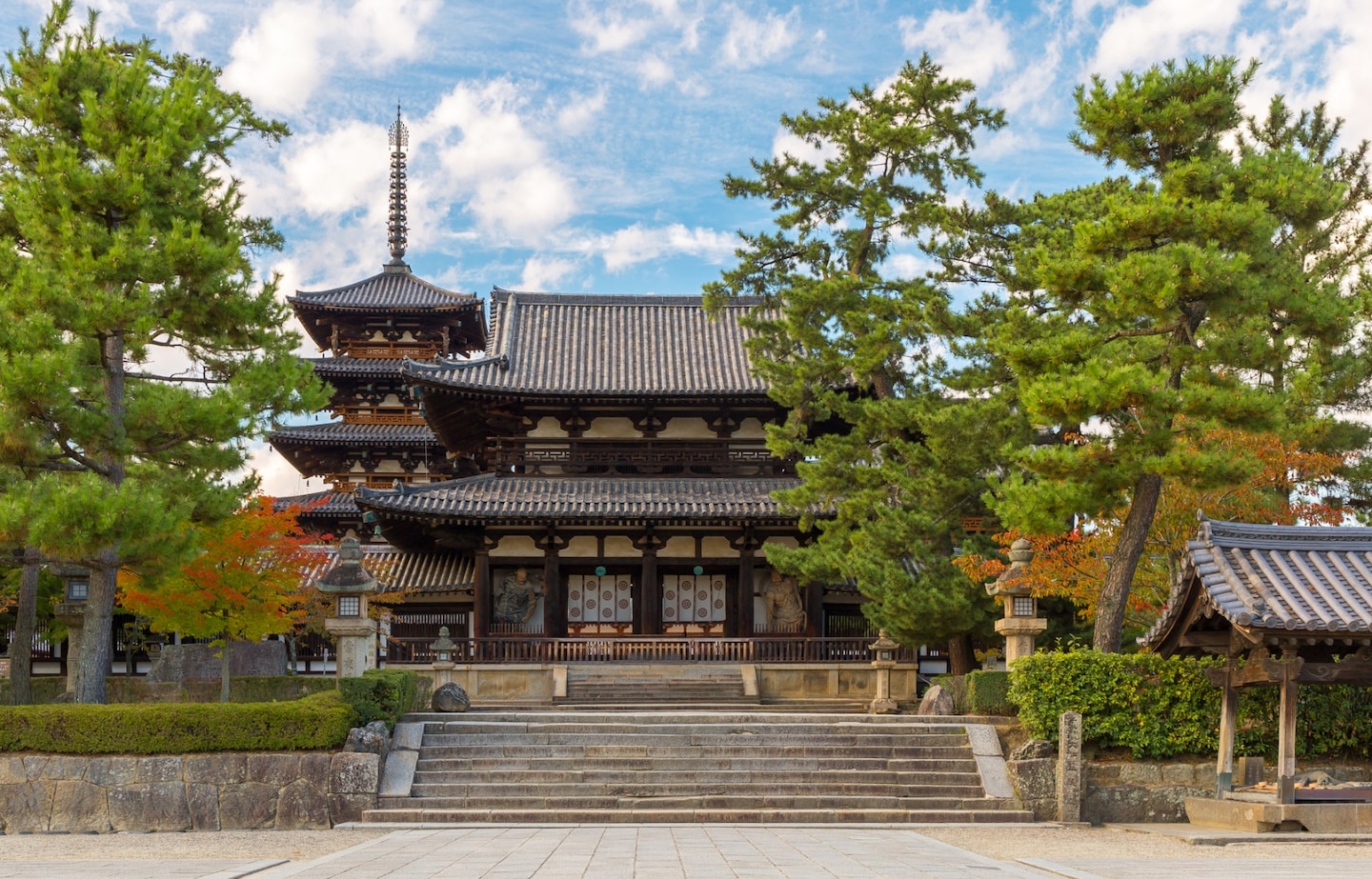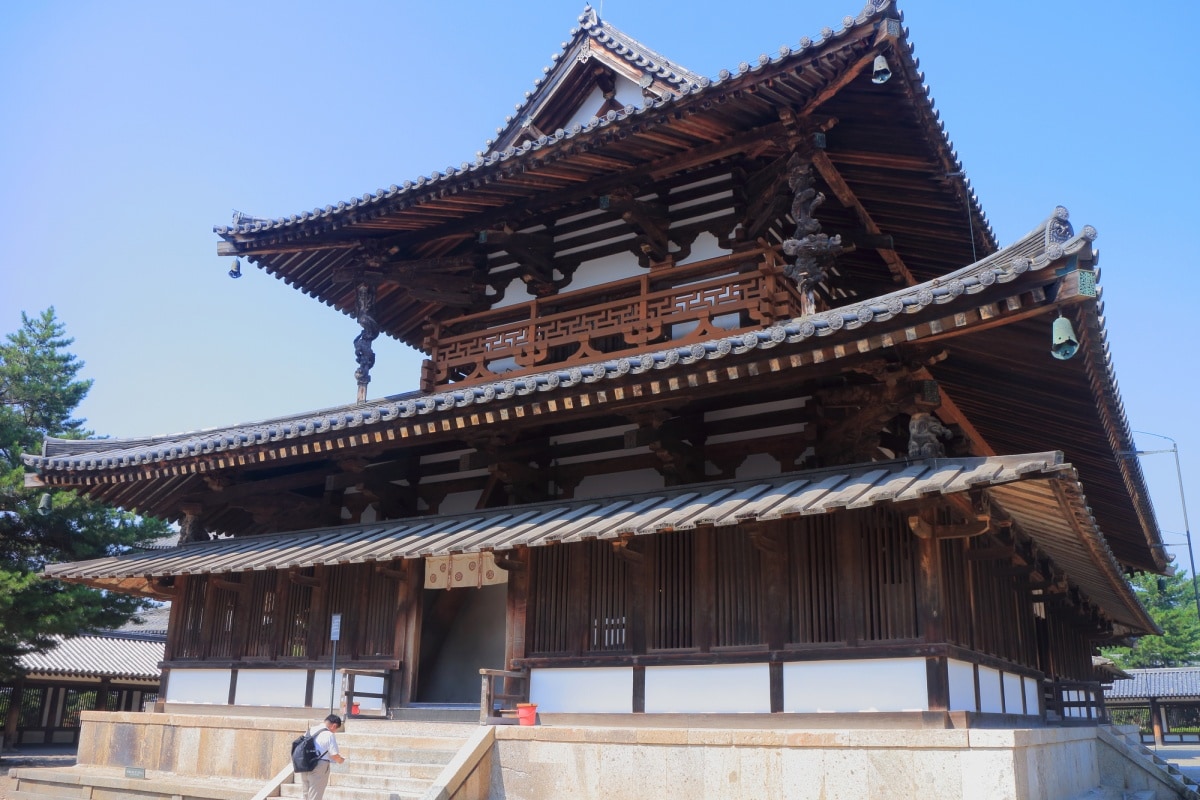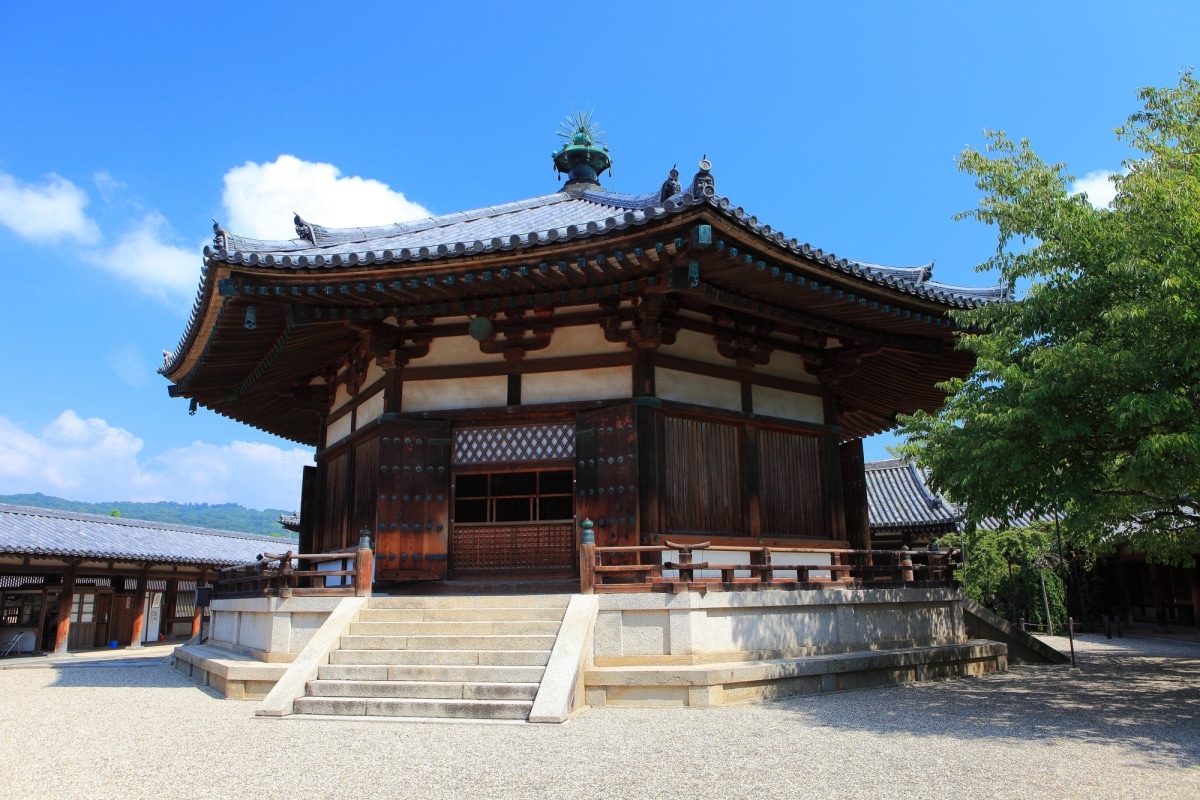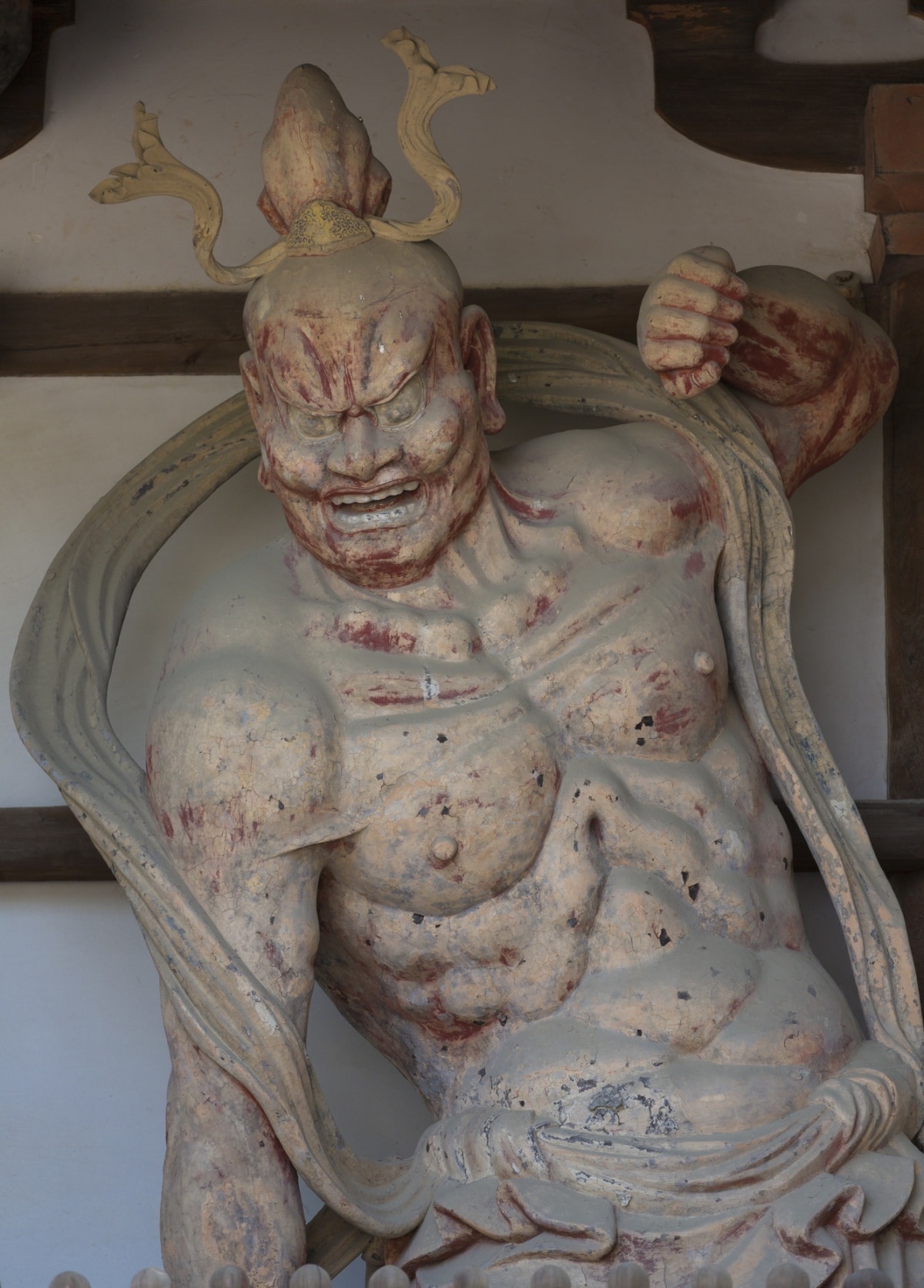Horyu-ji's Famous Buddhist Monuments

A UNESCO World Heritage Site, Horyu-ji is one of the most celebrated temples in Japan, with its main hall and pagoda believed to be some of the oldest surviving wooden buildings in the world. In 1993, Horyu-ji was designated as a UNESCO World Heritage Site along with nearby Hokki-ji, under the joint moniker: Buddhist Monuments in the Horyu-ji Area.
By John AsanoHistory of Horyu-ji

Horyu-ji, completed in 607 under the commission of Prince Shotoku, was dedicated to Yakushi Nyorai, the Buddha of healing, in honor of the prince’s father. The temple's full name of Horyu-ji Gakumon-ji literally means "Learning Temple of the Flourishing Law." As it was from here that Buddhism blossomed and spread throughout Japan under the protection of Prince Shotoku, the temple is of great historical importance. Several of the temple’s structures, sculptures and artifacts are listed as National Treasures of Japan.
Horyu-ji’s spacious temple grounds are separated into two main areas, the Sai-in in the west and the To-in in the east. The western precinct contains a famous ancient pagoda along with the main hall, while the eastern side holds the octagonal Hall of Dreams.
There are around 48 Buddhist monuments in the Horyu-ji area and several date from the late seventh or early eighth century. The monuments include 21 buildings in the eastern precinct of Horyu-ji, nine buildings in the western precinct of Horyu-ji, the pagoda at Hokki-ji and 17 monasteries and other buildings.
Five-Story Pagoda

The five-story pagoda at Horyu-ji dates from the seventh century and is the oldest wooden tower in the world. It stands at 32.45 meters (122 ft) in height. At its base is a tomb which reputedly enshrines fragments of one of the Buddha’s bones.
The 'Kondo'

The kondo, or main hall, also dates from the seventh century and houses precious sculptures and frescoes, including the famous Shaka Triad, together with bronze Yakushi and Amida Nyorai statues and other national treasures. A fire in 1949 caused severe damage to the first floor and particularly to the murals. The ones visitors see on the walls now are reproductions from the 1960s.
'Yumedono'

The Hall of Dreams, or Yumedono is the central building in the eastern precinct of the temple grounds. It's built on the grounds where Prince Shotoku once had his private palace. It was constructed in 739 to assuage the prince’s spirit and contains the famous Yumedono Kannon, a hibutsu (secret Buddha) statue that is only on display to the public at certain times of the year.
National Treasures
The National Treasures at Horyu-ji Temple are considered to be a time capsule of Japanese Buddhist art from the sixth and seventh century. The frescoes and statues contained within the temple, as well as the its architecture, reflect an important age of Buddhist influence in Japan. Buddhism arrived in Japan from China by way of the Korean Peninsula, and the Horyu-ji Area illustrates a stunning adaptation of Chinese Buddhist architecture and layout to Japanese culture during this golden period of art and influence.




